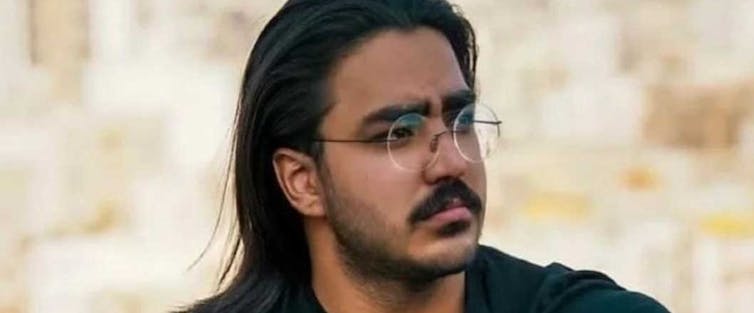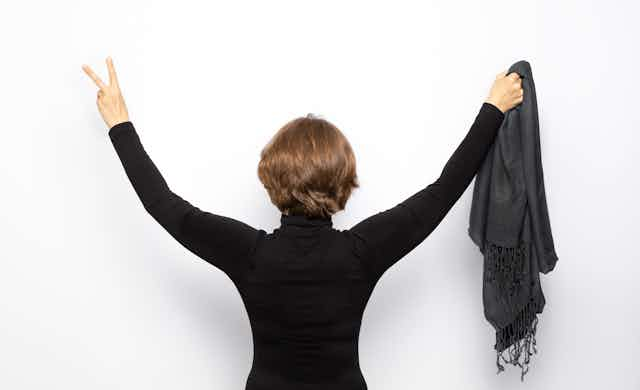The vibrant, brave and unyielding voice of dissent remains strong in Iran despite months of brutal repression by the clerical regime.
The “women, life, freedom” movement is an insistent call for change that is meeting the Islamic Republic head-on with resilient defiance. Even as violence curbs the outward signs of protest, the movement is very much alive, boldly innovating to challenge the regime.
The government, desperately holding on to its dwindling authority, continues its ruthless crackdown, employing a politics of fear to maintain a shaky status quo. It is predictably fighting back with all the grim weapons at its disposal.
For more than four decades, Iran has made liberal use of the death penalty. After China, Iran has the highest number of executions in the world.
But since the protests began after a 22-year-old woman, Mahsa Amini, was murdered by the morality police last September for wearing her hijab “improperly”, there has been a worrying surge in executions. In the first five months of 2023, the Islamic Republic executed more than 300 people, 142 in May alone.
Accused death penalty prisoners rarely get a fair trial, in clear breach of international law. The principal method of execution in Iran is hanging, mainly in private, although the regime knows the chilling effect of killing their condemned in public. In December, protester Majidreza Rahnavard was hanged publicly in Mashhad while a group of people looked on.

Despite the regime’s claim that half of this year’s executions were linked to narcotics-related offences, death penalties disproportionately target ethnic and religious minorities who have faced significant repression over the past four decades.
The Islamic Republic uses state-sponsored murder to maintain a climate of fear. For months, millions of Iranians have woken up scared to check the news on their phones, fearing to hear about another young protester executed.
State-sponsored rape
In recent months, there have also been many reports about the use of rape against male and female detainees, a long-used tactic in the Islamic Republic’s prisons. Recently, the former director of the notorious Evin prison, Hossein Mortazavi, acknowledged that in the 1980s, female prisoners who were still virgins were forcibly married to jailers before execution.
Clerics believed that if virgin girls were executed, they would go straight to heaven. So, they raped them in the form of forced marriage so that they would not die virgins.
Various testimonies shed light on the sexual violence directed against those detained since the beginning of the uprising. Horrific practices like this may exacerbate the Islamic Republic’s crisis of legitimacy, but it can also make people think twice before taking to the streets.
Mass arrests, many still in jail
Nearly 30,000 people were reportedly detained for protesting, political activities or expressing opinions in the 12 months to the end of March.
Iran’s head of the judiciary announced on March 13 that 22,000 detainees had been “pardoned” and released in the previous six months. But he didn’t comment on the fate of at least 7,000 prisoners who remained in some of the most notorious prisons in the Middle East.
There has been very little news about influential detainees, including rapper Toomaj Salehi, who was arrested in October 2021.
On November 26 2022, Toomaj’s family expressed deep concern for his life, indicating that he had been tried in a closed-door proceeding. The following day, Iranian media disclosed that Salehi was indicted with “corruption on Earth,” a charge that could potentially result in a death sentence.
Hardline approach failing to deter protest
Iran’s hardline supreme leader, Ali Khamenei, has branded the protesters as “traitors” and rejected calls for constitutional reform, dismissing them as the demands of his “enemies”. In January he appointed the infamous former Revolutionary Guard commander Ahmadreza Radan as the country’s new police chief to increase the crackdown on protests. Radan has been blacklisted by the US and EU over rights abuses.
But despite the brutal repression, the women, life, freedom protests continue. “Too many young lives have been lost in the past few months for us to go back to how things were before,” one woman told the BBC recently.
Social movements often use symbols to maintain their existence and relevance, particularly in oppressive political contexts. In Iran, removing headscarves has become one of the most important acts of resistance against a regime that still maintains versions of “morality policing” to confront women who do not wear a “proper” hijab.
Despite the regime’s pressure and the uncompromising supreme leader, many women defy the state and continue to return to the streets without the hijab, regardless of the consequences. The streets are now filled with facial recognition cameras to identify women who defy the regime, but there is no sign of stepping back by the women.
There are also many instances of nonviolent resistance through music, dance and arts. Videos are circulating showing men and women spontaneously performing music and dancing in public. Women dancing in public is a red line for the Islamic Republic, yet they do it.
Most social media platforms are blocked by the regime, But many Iranians use censorship-bypassing technology (virtual private networks or VPNs) to go online to express dissent, boost solidarity and share inspiration. Despite all odds, the strength and resilience of the women, life, freedom movement continues to challenge the regime at every step with nonviolent resistance and cultural expression.
The movement’s refusal to back down, despite the increasing severity of the regime’s actions, demonstrates a remarkable resilience. The time bomb for the Islamic Republic is the young population, many of whom are setting themselves in direct opposition to the Islamist regime in calling for change.
Indeed, change is something an overwhelming majority of Iranians say they want, according to polling conducted last year. And the resilience of the women, life, freedom protesters shows they are not afraid to put their lives on the line to fight for it.

